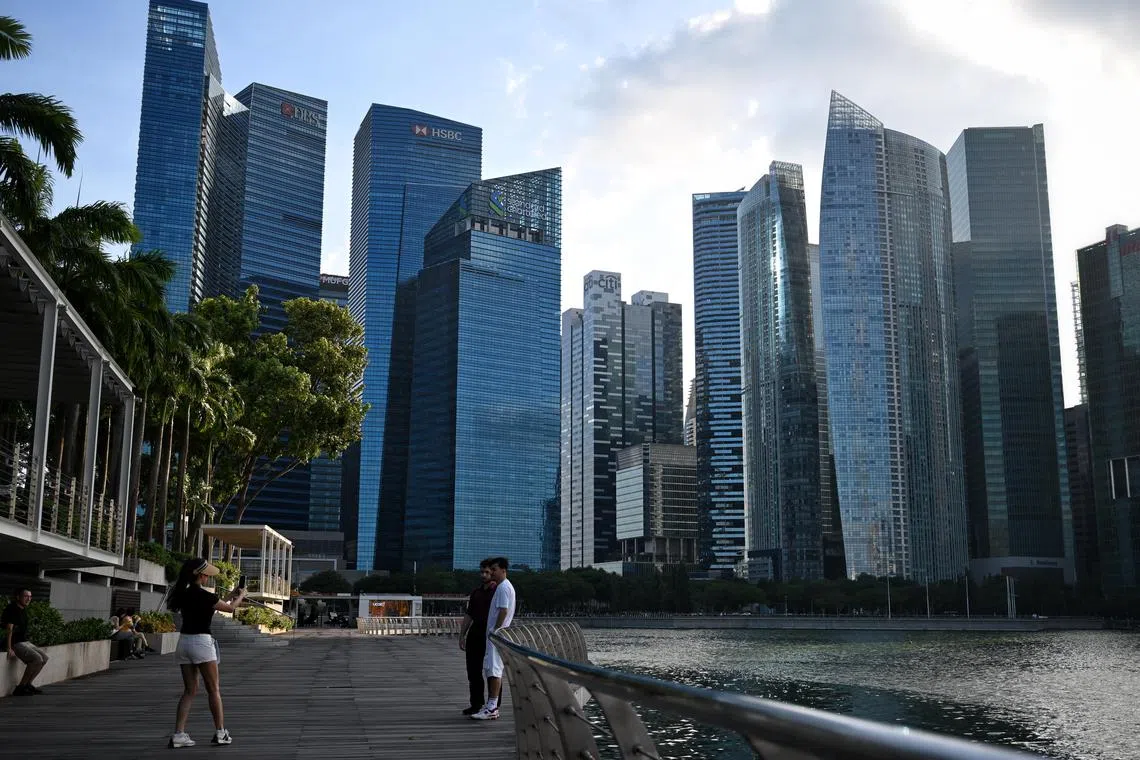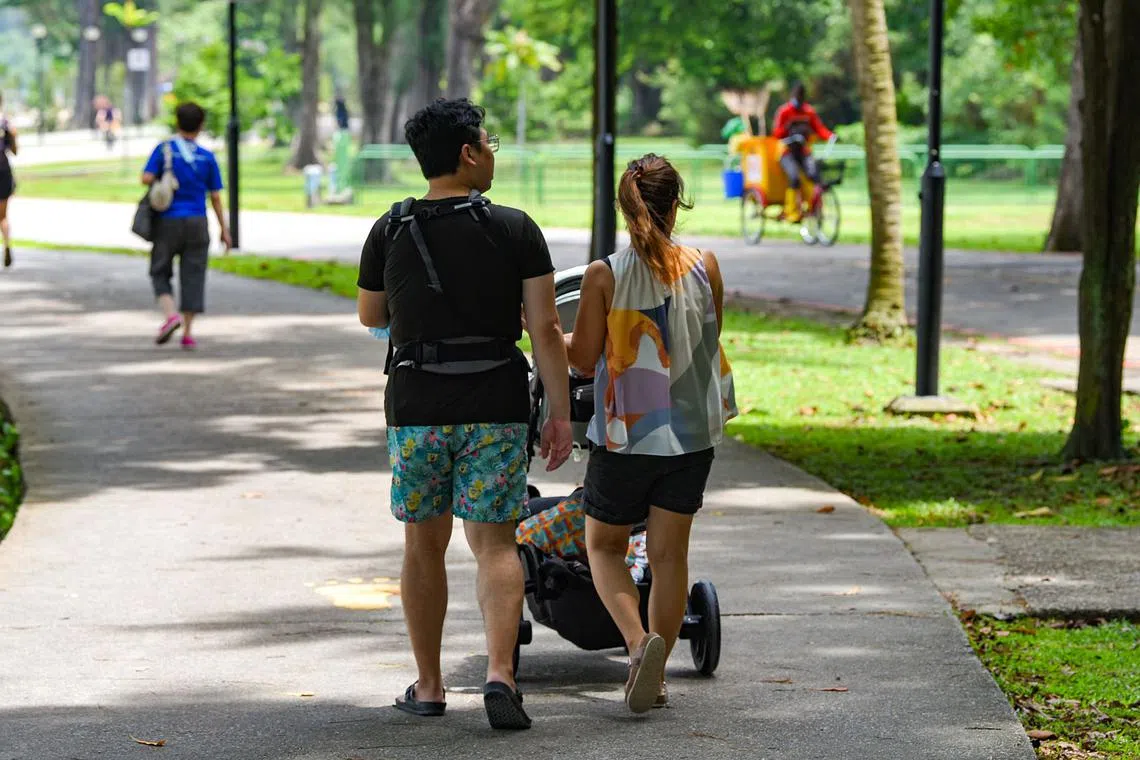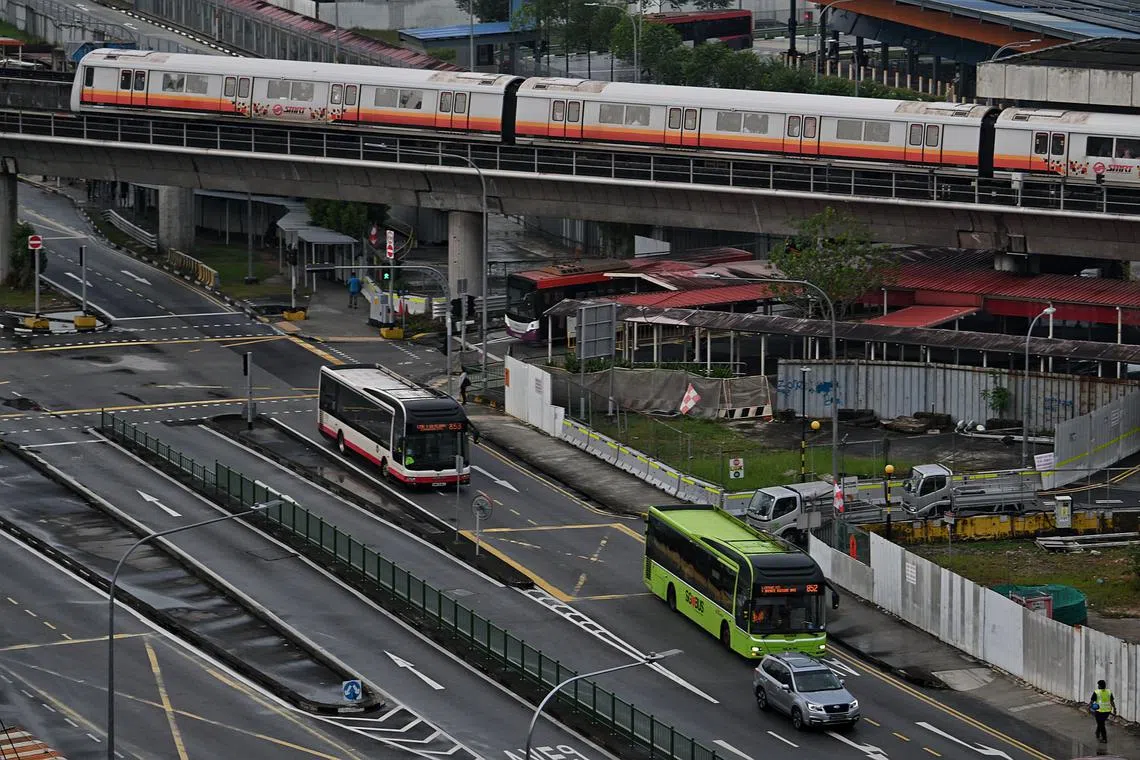10 areas where Singapore has made progress: Public sector report card
Sign up now: Get ST's newsletters delivered to your inbox

Published by the Ministry of Finance on Nov 1, the report outlined opportunities that Singaporeans have at every stage of life.
PHOTO: ST FILE
Follow topic:
SINGAPORE – The Republic has made progress in key areas of national interest, according to the eighth edition of the Singapore Public Sector Outcomes Review,
Published by the Ministry of Finance (MOF) on Nov 1, the report outlined opportunities that Singaporeans have at every stage of life.
It also highlighted how Singaporeans have stepped up as part of the Forward Singapore exercise to help shape the country’s next stage of development.
Here are 10 key takeaways from the report:
1. Economy
Economy continues to grow, while inflation is down
Singapore’s real gross domestic product (GDP) grew at an annualised rate of 2.6 per cent between 2019 and 2023. Real GDP growth for 2024 is expected to be at the upper end of the 2 per cent to 3 per cent forecast range, improving on the 1.1 per cent achieved in 2023.
Inflation slowed significantly in 2024, after having stayed high in the preceding two years. This is partly due to the appreciation of the Singapore dollar, a fall in food commodity prices and less labour market tightness, said MOF.
Singapore remains top in competitiveness
The Republic was ranked the most competitive economy
Business formation here was also strong – over 70,000 business entities were formed in 2023, more than the 64,000 yearly average from 2019 to 2022.
2. Employment and retraining
Rising wages, high employment
The employment rate of residents aged 25 to 64 in 2023 was 82.6 per cent, higher than the 80.8 per cent achieved before the Covid-19 pandemic in 2019. Residents also generally saw an increase in their wages over the past few years, said MOF.
Income inequality, as measured by the Gini coefficient, fell to 0.371 in 2023
Effective job-seeker support
Retrenchments rose in 2023, mainly due to business reorganisation or restructuring. Nearly 10,000 residents were laid off that year, but at least three in five were able to get a new job within six months. Resident unemployment and long-term unemployment rates remained low at 2.7 per cent and 0.7 per cent, respectively.
Job seekers who underwent reskilling and placement programmes showed good outcomes, said MOF. Some 98 per cent of SkillsFuture trainees surveyed in 2023 reported better work performance after training.
Meanwhile, nine in 10 participants in career conversion programmes remained employed for 24 months, and about seven in 10 earned more than their last drawn salaries.
3. Health and active living
Life expectancy remains high, but some diseases on the rise
Singaporeans continued to have one of the longest life expectancies globally, at 87.7 years for females and 83.6 for males. The health-adjusted life expectancy at birth is 75.9 years for females and 73.9 for males in 2021.
While regular participation in sport and exercise has increased and progress was made in reducing the prevalence of high cholesterol and diabetes, the prevalence of obesity and high blood pressure has increased.
Healthcare affordability improves despite ageing population
Out-of-pocket costs as a percentage of healthcare expenditure fell by 8.7 percentage points between 2017 and 2021, due to government subsidies, MediShield Life and MediSave. This is despite overall healthcare spending having surged from $20.69 billion to $30.15 billion over the same period, partly due to Covid-19.
Median wait times for adults in public hospitals rose sharply from two hours in 2019 to 7.2 hours in 2023. This was due to delays in healthcare infrastructure projects caused by the pandemic, and increased healthcare needs as Singapore’s population ages.
4. Education
Better access to, affordability for pre-schools
Full-day pre-school places were increased to over 200,000 spots in 2023 to meet increased demand, while fees have become more affordable due to lowered fee caps for anchor operator and partner operator pre-schools in 2023.
These fee caps will be further reduced in 2025. Families earning $6,000 and below each month will qualify for full childcare subsidies from December 2024, benefiting up to 17,000 more children.
Students continue to top international rankings
Singapore’s students came out top in reading, mathematics, science, and creative thinking in the Organisation for Economic Cooperation and Development’s Programme for International Student Assessment in 2022.
They also have more pathways and opportunities to pursue their strengths and interests, with full subject-based banding introduced in secondary schools in 2024.
5. Families and parenthood

Efforts to encourage marriage and parenthood were implemented, as Singapore saw a decline in its resident total fertility rate.
ST PHOTO: EUGENE TAN
More support for families
To encourage marriage and parenthood, the Baby Bonus scheme was enhanced
These enhancements came as Singapore saw a decline in its resident total fertility rate in 2023 to 0.97,
More childminding options
Full-day infantcare places were raised by around 50 per cent in the past five years, with another 9,000 centre-based infantcare places to be added by 2030.
The Government is also launching a three-year childminding pilot for infants by December 2024, as an additional affordable option for parents who prefer more personalised home-based care.
6. Housing
Increased grants make first homes more affordable
First-timer families got more help to buy their homes. The Enhanced CPF Housing Grant
The new BTO classification into Standard, Plus and Prime flats
Wait times for flats improved
The median wait time for BTO flats improved from about five years in 2022, to three years and 10 months in 2023. There were 2,800 flats with shorter wait times launched in 2024, a year ahead of the Government’s targeted timeline.
Families that needed subsidised housing in the interim were supported through the Parenthood Provisional Housing Scheme (PPHS). The number of PPHS flats will be doubled to 4,000 by 2025.
7. Ageing and retirement
Retirement adequacy boosted
About seven in 10 active Central Provident Fund members turning 55 were able to meet their Basic Retirement Sum in 2023. Schemes such as the Matched Retirement Savings Scheme and Majulah Package helped to further boost retirement adequacy.
A total of 388,000 lower-income workers and 260,000 seniors were supported in their retirement under the Workfare Income Supplement scheme and Silver Support Scheme, respectively, in 2023.
More opportunities to keep working
From July 2022, the retirement and re-employment ages were raised to 63 and 68, respectively. This has given more opportunities to seniors who wish to continue working, in turn raising the employment rate of seniors, said MOF.
The employment rate of seniors has generally increased in the past five years. In 2023, over nine in 10 eligible seniors were offered re-employment, while some 400,000 older workers had their wages partially offset through the Senior Employment Credit.
8. Connectivity

The Government will provide $250 million in additional subsidies in 2025 to cover the cost of deferred fare increases.
ST PHOTO: KUA CHEE SIONG
Shorter travel times, better in-neighbourhood links
More than nine in 10 residents could walk, cycle or ride to their neighbourhood centres within 20 minutes, and two-thirds could commute to work within 45 minutes during peak periods using these transport options.
Travel times to the east have been shortened by up to 50 per cent with the opening of Stage 4 of the Thomson-East Coast Line
Additional subsidies to keep fares affordable
The Government will provide $250 million in additional subsidies in 2025
Among lower-income households, spending on public transport as a proportion of household income remained at around 2.4 per cent in the past five years.
9. Safety and security
Most people confident about Singapore’s security
Crime rates in Singapore remained low, with reported physical crimes falling by 1.1 per cent between 2022 and 2023. Singapore’s recidivism rate is also among the lowest in the world, at 22 per cent for the 2021 release cohort.
More people are also contributing to Singapore’s safety. There was an increase in response rates to cardiac arrest and minor fire cases, from about 34 per cent in the 2019 financial year to about 45 per cent in FY2023.
More measures taken to prevent scams
To fight scams, the Government is working closely with banks and the community on initiatives such as Money Lock to safeguard against fraudulent online bank transfers.
It averted about $150 million in potential losses from scams in 2023 through the automated sending of SMS alerts to scam victims, and recovered more than $100 million in lost monies from scams via the Anti-Scam Centre the same year. Working with overseas law enforcement agencies, it took down 19 transnational scam syndicates in 2023.
10. Sustainability
Better water, energy and food resilience
Singapore diversified its food supply sources to 187 countries and regions in 2023, up from 172 in 2019.
Mandatory water recycling requirements were implemented for water-intensive sectors from Jan 1, 2024. Together with a third Newater factory in Changi targeted for completion by end-2026, these measures aim to make Singapore more resilient for water.
More green spaces created and restored
From April 2020 to February 2024, Singapore restored and enhanced more than 40ha of forest, coastal and marine habitats, and will restore 80ha by 2030.
Some 210km of nature ways and more than 380km of park connectors have also been established as at February 2024, in order to strengthen ecological connectivity between nature reserves, gardens and parks. This includes the completion of the 18km Eastern Corridor that month.


